Yamado
1 night
Rooms and Guests
1 room, 2 adults, 0 children
All properties in Nishiwaga
Yamado
Yukawa 52-71-10, 029-5514 Nishiwaga Town, Waga District, Iwate Prefecture, Japan
Show on map
We Price Match
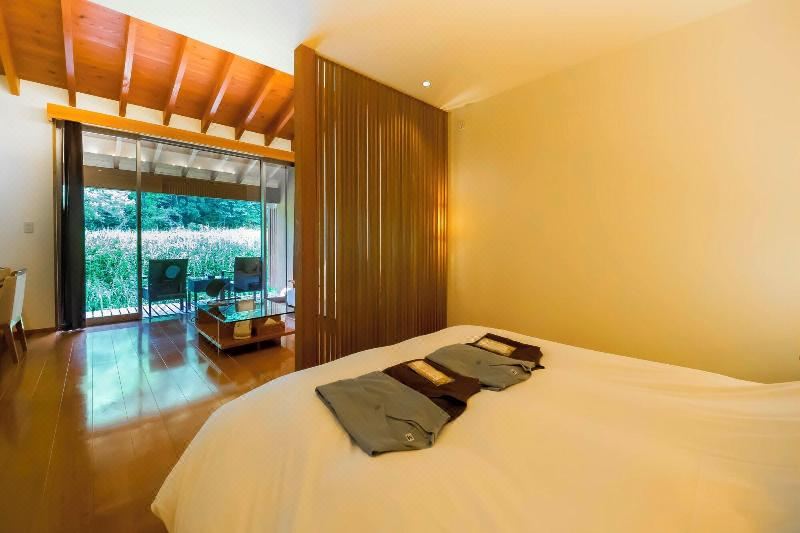
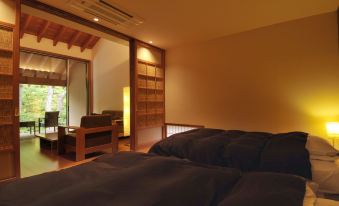
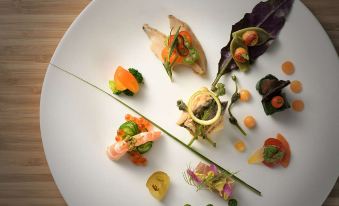

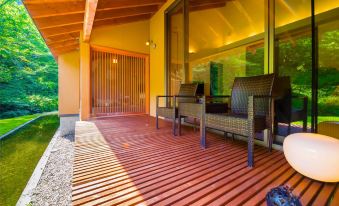
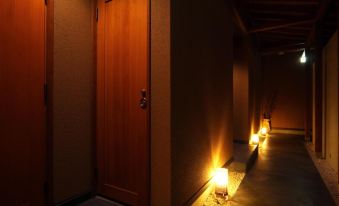
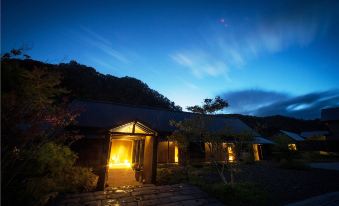
 Highlights
Highlights Free parking
Free parking Delicious breakfast
Delicious breakfast Excellent service
Excellent service Sparkling clean
Sparkling clean Top local pick
Top local pickShow more
Amenities
Private parkingFree
Hot Spring
Hiking
Spa
Massage Room
Restaurant
Wi-Fi in Public Areas
Front Desk with Limited Hours
All amenities
Property Description
When you stay at Yamado in Nishiwaga, you'll be within a 5-minute drive of Nishiwaga History and Folklore Museum. This ryokan is 15.8 mi (25.4 km) from Kurikoma Quasi-National Park and 18.5 mi (29.7 km) from Kamakaura Museum.
Show more
9.4/10
AmazingCleanliness9.4
Amenities9.4
Location9.4
Service9.4
All 7 reviews
Surroundings
Airport: Hanamaki Airport
(61.8 km)
Train: JR Hottoyuda station
(4.1 km)
Train: JR Yudakogen station
(8.9 km)
Landmarks: Nishiwagamachi Tachikawamura Museum
(3.3 km)
Landmarks: Yuda Chosha Dam
(3.4 km)
Landmarks: Nishiwagamachi Tourism Association
(3.4 km)
View on map
Overview
Rooms
Guest Reviews
Services & Amenities
Policies

Annex Suite, Twin With Bath
Has window
Non-smoking
Private bathroom
Check Availability

4
Hollywood Twin With Bath
2 Single bed
Has window
Air conditioning
Private bathroom
Bathtub
Refrigerator
Check Availability

1
Annex Suite, Twin With Bath
Has window
Non-smoking
Private bathroom
Check Availability

5
Maisonette, Private Semi-Open-Air Bath,-Seizanro-Moegi, Shinrhoku, Nishiki, Sekka
2 Single bed
Non-smoking
Air conditioning
Private bathroom
Bathtub
TV
Check Availability

4
Superior Room with Hot Spring Bath
3 Double bed
Has window
Non-smoking
Air conditioning
Private bathroom
Bathtub
Refrigerator
Check Availability

2
Deluxe Room With Hot Spring Bath
3 Single bed
Has window
Non-smoking
Air conditioning
Private bathroom
Bathtub
Refrigerator
Check Availability

Annex Premium Suite, Twin With Bath
Has window
Non-smoking
Private bathroom
Check Availability

7
Maisonette Twin With Bath
Has window
Non-smoking
Air conditioning
Private bathroom
Bathtub
Refrigerator
Check Availability

Hollywood Twin With Bath
Has window
Non-smoking
Private bathroom
Check Availability

7
Annex Luxury Suite With Private Semi-Open-Air Bath, Rokujubo,-Buna-
2 Single bed
Non-smoking
Air conditioning
Private bathroom
Bathtub
TV
Check Availability
Hide Room Types
Guest Reviews
9.4/10
Amazing
7 reviews
 Verified Reviews
Verified Reviews- Cleanliness9.4
- Amenities9.4
- Location9.4
- Service9.4
Average for similar properties in Nishiwaga
Book now and leave a review after your stay to earn up to 120 Trip Coins (approx. NZD 2.00). Trip Coins can be used to save instantly on room rates.

AI Summary
The breakfast receives high praise for its deliciousness and ample portions. Guests appreciate the warm and attentive staff providing excellent customer care.

Guest User
July 27, 2025

Yamado is acclaimed for its natural surroundings, direct-source onsen (gensen kakenagashi), and its thoughtful approach to highlighting Iwate’s local specialties. Most of the staff hail from Iwate and take visible pride in sharing the region's charms with heartfelt hospitality. If our visit is any indication, the accolades Yamado receives are well earned — especially when it comes to service. It may not be flashy, but for travelers seeking a quiet retreat with authentic hot springs far off the tourist trail, Yamado excels. Unlike ryokans where a manicured garden might be central, Yamado embraces its remote location beside a forested hill and a gently flowing stream. The main building houses reception, a cozy lounge, and the restaurant Fukuzenbo. The property also includes a private rental bath (bookable in advance; we reserved a 4PM slot by phone) and 12 guest rooms flanking either side, each facing the hillside and river, complete with their own onsen. There isn't much to explore onsite, but what's there is deeply peaceful. We stayed in the Luxury Suite "Buna," a 52m² room with a separate living area, bedroom, and indoor onsen convertible to semi-open-air via large sliding windows. Though it lacked a desk, we appreciated the subdued colors and calming ambiance. Buna is Yamado's second-best room; Katsura shares the same layout but sits closer to the river with an outdoor terrace onsen — unfortunately already booked on our dates. Still, the view from Buna was stunning, and we spent hours simply gazing out at the landscape. That view reached new heights from Yu-ba Issun, Yamado's private rental bath suspended directly over the stream, hugged tightly by foliage. The onsen temperature was perfectly tuned for late June thanks to seasonal adjustments, allowing us to enjoy the full 30 minutes. I even spotted a Yamame (Japanese Cherry Trout) gliding through the water below. We returned at night and soaked under starlight in the softly illuminated setting. Here's a short clip I filmed of Yu-ba Issun: Dinner was a Japanese-European fusion centered on Iwate's finest ingredients, with Ginsetsu chicken from Nishiwaga (developed and raised by Yamado) and Hakkinton pork from Hanamaki leading the menu. Ginsetsu — born from Nambu Kashiwa — is raised in a stress-free environment fed by mineral-rich meltwater and processed using a proprietary technique. It's quietly gaining national recognition. The chicken appeared as Shabu-Shabu hot pot and Sichuan-style sweet and sour. Hakkinton pork featured in Fusilli with ground meat and as a low-temperature grilled chop. Local farmed and foraged plants added creative flair to many dishes. Iburi Gakko (smoked pickled daikon) was served tartare-style with Kogomi (Ostrich fern) and also appeared as a rice condiment. Mizu, a mustard spinach I hadn't encountered before, came in a sesame sauce mixed with shredded Ginsetsu chicken. A cocktail-glass starter layered Junsai (water shield), small shrimp, okra, and Kikuna (crown da

Guest User
February 7, 2024

This was my first time here after being recommended. There hasn't been much snow this year, so I was a bit worried, but the snow started to pile up on the way to the inn, and I was able to enjoy the hot springs while looking at the beautiful scenery. In the evening and in the morning, I was able to enjoy a wonderful meal in a relaxed atmosphere while watching the snow lights made by the staff, and I was very satisfied! There were many ingredients I had never tried before, and it was clear that they value local production and consumption. Everything was so delicious that I wish I had two stomachs. The staff were all very friendly, and I really enjoyed the photos they took. It's no wonder so many people come back! I'd like to visit again.
Original TextTranslation provided by Google
Services & Amenities
Most popular business facilities
Private parking
Free
Hot Spring
Hiking
Spa
Massage Room
Restaurant
Wi-Fi in Public Areas
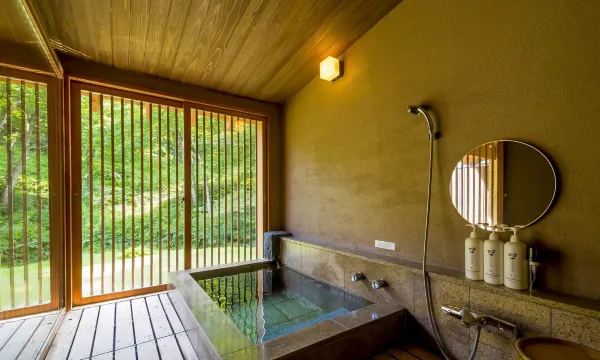
Hot Spring
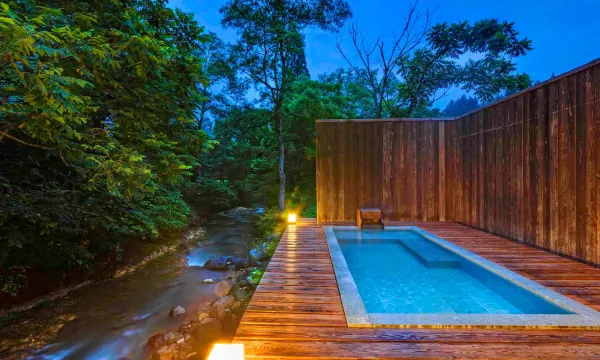
Spa
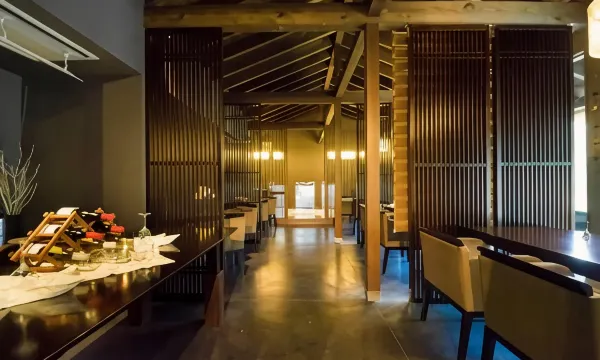
Restaurant
Restaurant
Restaurant
No additional info available
More Amenities
Internet
Wi-Fi in Public Areas
Parking
Private (exclusively for guests) is available On-site parking. Reservation not needed.
Private parking
Free
Front Desk Services
Front Desk with Limited Hours
Languages Spoken
Korean
Japanese
Food & Drink
Room Service
Public Areas
No Smoking in Public Areas
Garden
Health & Wellness
Spa
Massage Room
Hot Spring
Hiking
Activities
Fishing
Safety & Security
Fire Extinguisher
Property Policies
Check-in and Check-out Times
Check-in: 15:00–19:00
Check-out: Before 11:00
Front desk hours: [Mon-Sun]08:00–22:00
If you plan to arrive after 19:00 on your check-in day, contact the property in advance
Child Policies
Children are not permitted to stay in this room type.
Cots and Extra Beds
Extra bed and crib policies may vary according to room type. Please refer to the room type details for more information.
Breakfast
TypeAsian
| Age | Fee |
|---|---|
Adult | Contact property |
Additional breakfast fees are not included in the total and need to be paid at the property.
Pets
Pets are not allowed
Service Animals
Service animals are allowed
Age Requirements
The main guest checking in must be at least 18 years old
Paying at the Hotel
Property Description
- Number of Rooms: 12
When you stay at Yamado in Nishiwaga, you'll be within a 5-minute drive of Nishiwaga History and Folklore Museum. This ryokan is 15.8 mi (25.4 km) from Kurikoma Quasi-National Park and 18.5 mi (29.7 km) from Kamakaura Museum.
Pamper yourself with onsite massages or take in the view from a terrace and a garden.
Enjoy a meal at the restaurant, or stay in and take advantage of the ryokan's room service (during limited hours).
The front desk is staffed during limited hours. Free self parking is available onsite.
Make yourself at home in one of the 12 air-conditioned rooms featuring flat-screen televisions. Complimentary wireless internet access is available to keep you connected. Private bathrooms with separate bathtubs and showers feature spring water baths and complimentary toiletries. Conveniences include safes and desks, and housekeeping is provided on request.
Pamper yourself with onsite massages or take in the view from a terrace and a garden.
Enjoy a meal at the restaurant, or stay in and take advantage of the ryokan's room service (during limited hours).
The front desk is staffed during limited hours. Free self parking is available onsite.
Make yourself at home in one of the 12 air-conditioned rooms featuring flat-screen televisions. Complimentary wireless internet access is available to keep you connected. Private bathrooms with separate bathtubs and showers feature spring water baths and complimentary toiletries. Conveniences include safes and desks, and housekeeping is provided on request.




